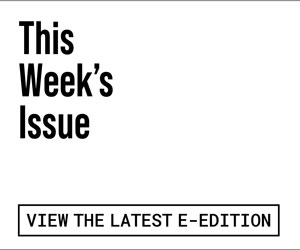 A new method could be strawberry growers’ alternative to controversial fumigants
A new method could be strawberry growers’ alternative to controversial fumigants
Last Tuesday, the Santa Cruz County UC Cooperative Extension in Watsonville was filled with growers, packers, shippers and scientists from the region’s strawberry and caneberry industry—all wanting to learn more about Anaerobic Soil Disinfestation (ASD), a biological alternative to chemical fumigation in the fight against soil-borne diseases that can destroy crops.
The practice, first developed in Japan and the Netherlands, is gaining popularity among organic strawberry growers in the region, but the Aug. 19 workshop was filled with folks from the conventional farm industry, as the chemicals they have traditionally relied on have been increasingly targeted by regulators, farm worker advocacy groups and anti-pesticide activists, impacting how they operate and their bottom line.
Researchers believe that ASD could be a substitute for chemical fumigation in county agriculture, which involves the application of restricted-use pesticides including methyl bromide, a chemical being phased out around the world for its ozone-depleting properties, as well as chloropicrin and 1,3-Dichloropropene, which the EPA has labeled a “probable human carcinogen.”
“The current industry is totally based on being able to fumigate, and now that perception is changing,” says Jonathan Winslow, farm services manager at Farm Fuel Inc., which organized the workshop. “There needs to be [an] adoption of new practices that will accomplish the same things.”
The Watsonville-based company, which got its start producing biofuel from mustard seed, has been experimenting with ASD on strawberries and other row crops for five years. It is in year two of a three-year grant from the California Department of Pesticide Regulation (DPR) to continue their trials and work to make ASD a commercially viable alternative to chemical fumigation.
Fumigation and ASD work differently; fumigants are injected into the soil or delivered through drip irrigation by licensed contractors and covered with a barrier tarp, enabling the trapped gasses to spread through the soil underneath.
ASD, on the other hand, uses a carbon source, such as rice bran, molasses, or grape pomace—a wine and juice-making byproduct, which is mixed into the soil. The soil is then covered with plastic mulch, sealed to keep oxygen out, and irrigated and monitored with soil sensors for approximately three weeks.
Currently, Farm Fuel has 22 trial sites for ASD across the state. “Research proves it works,” Winslow says. “We are refining methods at this point, so it’s the easiest and cheapest for the grower and still works at the level they need it to work.”
According to an estimate from the California Strawberry Commission, which represents 400 growers and dozens of shippers and processors in the state, it costs about $3,335 per acre to fumigate.
Farm Fuel estimates the price of ASD at about $2,700 per acre. However, ASD requires more preparation and irrigation time, necessitating labor, and a large amount of carbon source—approximately six to nine tons of the stuff per acre, which has to be transported to site and then fully incorporated into the soil.
ASD can be used with various crops, not just strawberries, and growers around the country are experimenting with different carbon sources, depending on local availability—farmers in Tennessee are using wheat bran.
Some organic strawberry growers in the region already use ASD. Driscoll’s research manager Dan Chellemi says approximately 20 percent of the organic strawberry ranches that grow for Driscoll’s in Salinas and Watsonville are trying ASD. Other than ASD, Chellemi says the growers use mustard seed meal and high rates of compost to combat soil-borne diseases. Chellemi says to maximize the benefits and results of ASD, it should be used in conjunction with cover cropping and crop rotation.
Goodbye, Bromide
For methyl bromide, though, the writing is on the wall.
The Montreal Protocol, an international treaty, effectively banned methyl bromide in 1989 due to its contribution to ozone depletion. As it has been gradually phased out in countries around the world, methyl bromide is only allowed to be used in special cases where petitioners showed that a viable alternative had not been found.
California strawberry growers are the last remaining industry in the United States to receive a Critical Use Exemption (CUE) by the Montreal Protocol for pre-plant soil fumigation because of the severe soil disease issues strawberry farmers face, says Chris Christian, Senior Vice President of the California Strawberry Commission.
Even as the Commission contributes to the search for fumigant alternatives through its Farming Without Fumigants Initiative, which invested $200,000 on ASD research this year, it received a CUE for 830,290 pounds of methyl bromide, which can be used in the state in 2015. “That amount will be able to treat less than 10 percent of total California strawberry acreage,” says Christian. (California grows approximately 90 percent of the nation’s total strawberry crop, she adds.)
The commission has applied for a Critical Use Exemption in 2016—that decision is still being considered by the Montreal Protocol and will be determined at a committee meeting later this year, she says.












